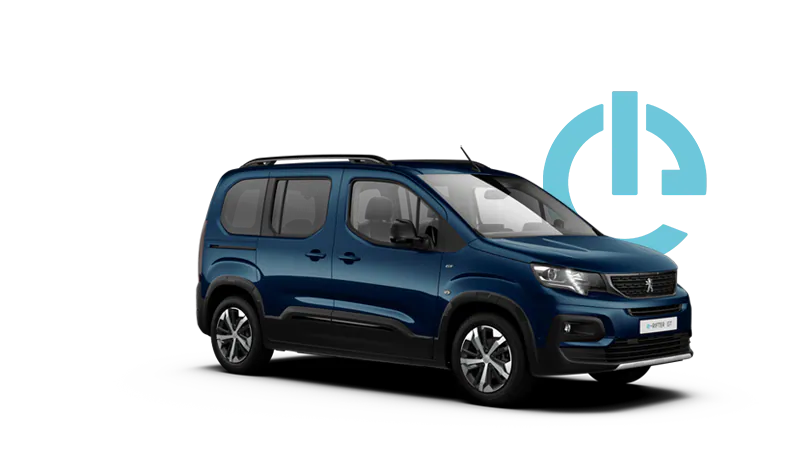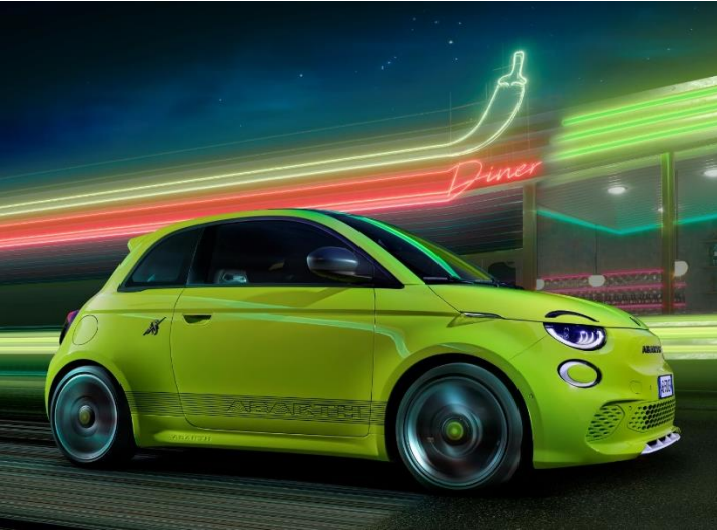If you can afford the higher asking price and can cope with the 172 mile driving range, then there aren’t too many other downsides in opting for the fully electric Peugeot e-Rifter.
Background
The segment for compact People Carriers has recently gained something of a fresh lease of life, courtesy of EV power. What used to be called the PSA Group has doggedly continued to sell small MPVs as sales in this sector have declined and now may reap the benefit, with fully electrified versions of the Citroen Berlingo, the Vauxhall Combo and the subject of this test, Peugeot’s e-Rifter.
As with those two in-house rivals, it gets the 50kWh battery that Peugeot, Citroen and Vauxhall seem to fit to every EV they make, even the biggest MPVs. Here of course, a battery of that size is far more appropriate and it’s been built into the car in a way that doesn’t compromise cabin space. Sounds interesting.
The Peugeot e-Rifter Driving Experience
There’s not too much to get used to in driving an e-Rifter. You’re offered three driving modes – ‘ECO’, ‘Normal’ and ‘Power’. You won’t want to spend too long in ‘ECO’, unless you really are eeking out battery capacity, because it reduces the powertrain’s normal 134bhp output to just 80bhp and also restricts the climate system to conserve power. Peugeot suggests that you do most of your driving in the ‘Normal’ setting, which increases the motor output to 107bhp. The top ‘Power’ mode isn’t really intended for sporty driving but for situations when you’re carrying heavy loads. The powertrain also has a ‘B’ setting which increases the level of regenerative braking to a point where the car slows so much when you come off throttle that you’ll very rarely need to use the brake, unless you’re coming to a complete stop.
You’ll want to know about driving range, which is claimed at 172 miles for this Standard length model, around 30 miles less than the full-electric Vauxhall Corsa and Peugeot 208 superminis that also use this battery. But it’s much closer to the range figure of the Citroen e-C4, which also uses it. Like all electric vehicles, this one has a bit of a weight problem – that drivetrain adds over 300kgs of bulk – but that arguably helps the e-Rifter when it comes to ride quality; you’ll feel things like speed humps keenly, but at speed on the open road, it handles tarmac tears a little better than its combustion cousins.
The Peugeot e-Rifter Design and Build
There’s very little outward differentiation to identify this particular Rifter’s all-electric status. Unless you notice the lack of tailpipes and the addition of a charging flap, extra badging and trim accents are the only giveaways. You’ll really need the extra embellishment of top ‘GT’ trim though, if you want to distract the attention of passers-by that all you’ve actually really got here is a Peugeot Partner van with extra seats and windows. That ‘GT’ spec gets you 17-inch ‘Aoraki’ alloy wheels, plus front and rear scuff plates and door sill protectors with gloss black inserts for that SUV look. There’s now only one wheelbase choice – ‘M’ (for ‘Medium’) which offers five seats.
Like its Vauxhall and Citroen cousins, this car sits on the PSA Group’s EV-compatible e-CMP platform. Because the battery pack is mounted beneath this MPV model’s floor, cabin space is not compromised at all. Which means that there’s simply loads of luggage space. The offered five-seat short wheelbase ‘M’ model can swallow 775-litres in its boot. In addition, if you’re taking really long items, the front passenger seat can be folded flat. The parcel shelf at the back can take up to 25kg of weight (so you can put the dog on top of the shopping). And dotted around the cabin are a multitude of storage areas which have a combined capacity of 167-litres. At the wheel, it’s much as in a conventional Rifter, except that the 8-inch central display offers various EV specific display modes and there is an EV drive toggle switch in place of the usual gear selector.
The Peugeot e-Rifter Market and Model
There are two trim levels on offer – ‘Allure’ and ‘GT’. Both use the same 50kWh battery, which powers a 134bhp motor. Pricing starts at £31,600. You’ll need £33,630 if you want the top ‘GT’ model. Both variants now come only in ‘Standard’ length 5-seat form.
The ‘Allure’ model is delivered as standard with a capacitive eight-inch touchscreen featuring both ‘Apple CarPlay’ and ‘Android Auto’. Inside, the ‘Allure’ model also comes with Puma cloth upholstery, a folding front passenger seat and three independent rear seats. All models come with tray tables on the back of the front seats too.
The e-Rifter’s safety tally’s reasonable, all models fitted with Peugeot’s Safety Pack that features Active Lane Keeping Assist, Active Safety Brake, Cruise Control with a Speed Limiter, Speed Limit Recognition and Recommendation, plus Driver Attention Alert. In addition, all models also come as standard with rear parking sensors.
The Cost of Owning a Peugeot e-Rifter
We mentioned the WLTP-rated range in our Driving Experience section – 172 miles. To optimise range, you’ll need to make full use of the car’s regenerative braking system, regularly activating the provided ‘B’ mode via the central console to maximise energy recovery during braking. As you’d want, the e-Rifter supports up to 100kW rapid (DC) charging, with an 80% re-charge taking less than 30 minutes, while a full charge from a 7.4 kW single-phase wallbox takes 7.5 hours thanks to the 7.4kW on-board charger.
Customers with access to three-phase power can specify an optional 11kW on-board charger that will charge the e-Rifter in 4 hours 45 minutes, when using a wallbox that also supports this faster home-charging solution. As usual with a compact zero emissions EV model, there’s a Benefit-in-Kind first year tax rate of just 2%. And exemption from London congestion and ultra-low emissions charges,at least until 2025 anyway. Insurance is rated at 19E for a ‘Allure’ variant, or 20E for the ‘GT’ model.
Maintenance intervals are much as they would be for a combustion model, but there’ll be less for the workshop to do, so costs should be lower. There are plenty of Peugeot outlets to choose from, so you should never be too far from one. So you can budget ahead, the French maker offers a pre-paid servicing scheme that lets you pay either a one-off fee or monthly instalments to cover the cost of the routine upkeep of your car for as long as three years and 35,000 miles.
Summary
There must be plenty of people out there who want a family-shaped compact electric vehicle – maybe as a second car – but don’t want an SUV. It would have to be realistically priced, have an acceptable driving range and not look too van-like. The e-Rifter, to our eyes anyway, ticks all these boxes.
For whatever reason, with the right spec in place, there’s a bit less of a whiff of LCV here than there is with this model’s two Stellantis Group cousins, the Vauxhall Combo-e Life and the Citroen’s e-Berlingo. Plus this Rifter can be a van if you need it to be. Jack of all trades then; and master of one – the art of by-passing fuel stations. If you are interested in the Peugeot e-Rifter enquire now.





